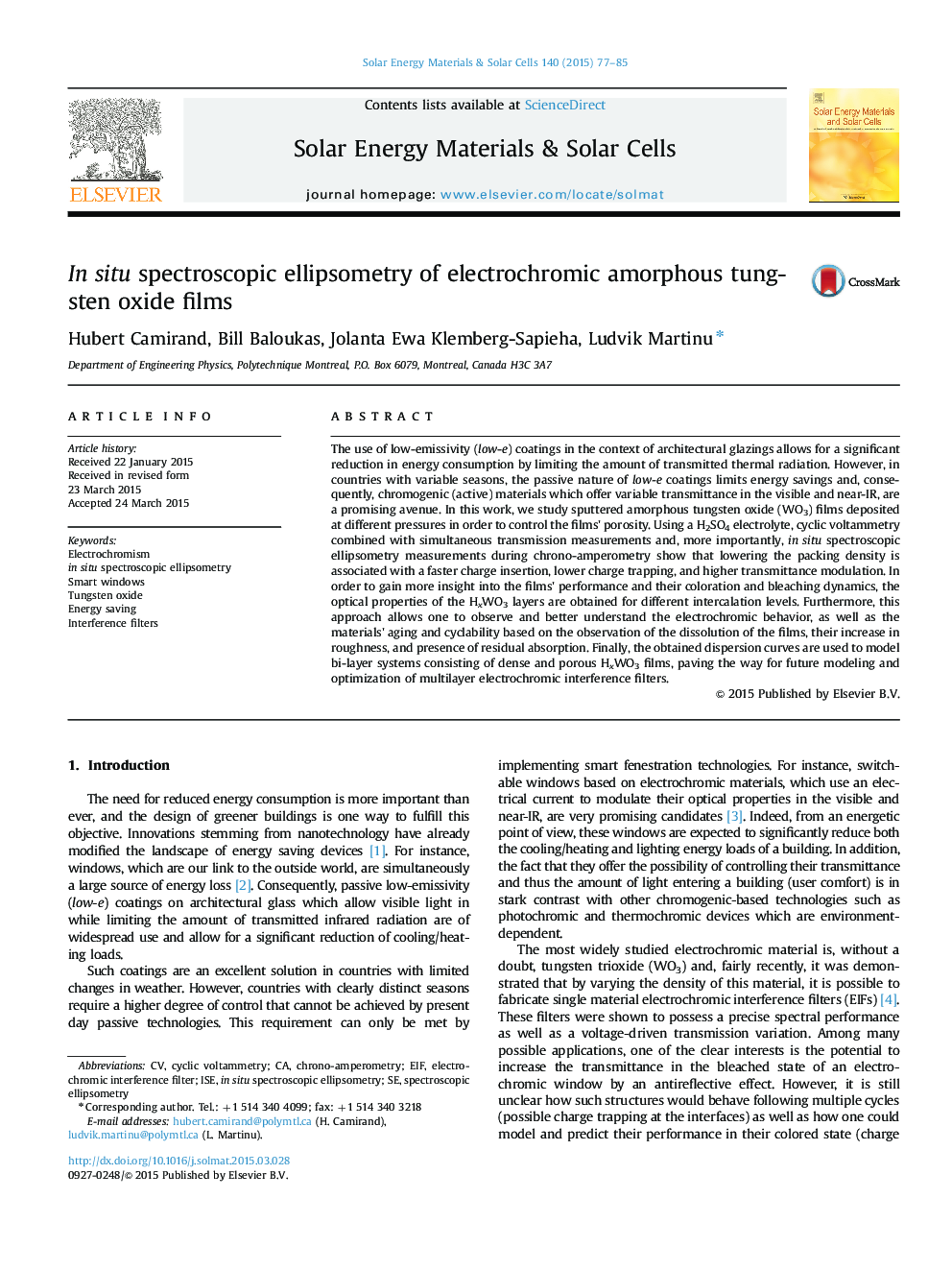| Article ID | Journal | Published Year | Pages | File Type |
|---|---|---|---|---|
| 6535150 | Solar Energy Materials and Solar Cells | 2015 | 9 Pages |
Abstract
The use of low-emissivity (low-e) coatings in the context of architectural glazings allows for a significant reduction in energy consumption by limiting the amount of transmitted thermal radiation. However, in countries with variable seasons, the passive nature of low-e coatings limits energy savings and, consequently, chromogenic (active) materials which offer variable transmittance in the visible and near-IR, are a promising avenue. In this work, we study sputtered amorphous tungsten oxide (WO3) films deposited at different pressures in order to control the films' porosity. Using a H2SO4 electrolyte, cyclic voltammetry combined with simultaneous transmission measurements and, more importantly, in situ spectroscopic ellipsometry measurements during chrono-amperometry show that lowering the packing density is associated with a faster charge insertion, lower charge trapping, and higher transmittance modulation. In order to gain more insight into the films' performance and their coloration and bleaching dynamics, the optical properties of the HxWO3 layers are obtained for different intercalation levels. Furthermore, this approach allows one to observe and better understand the electrochromic behavior, as well as the materials' aging and cyclability based on the observation of the dissolution of the films, their increase in roughness, and presence of residual absorption. Finally, the obtained dispersion curves are used to model bi-layer systems consisting of dense and porous HxWO3 films, paving the way for future modeling and optimization of multilayer electrochromic interference filters.
Keywords
Related Topics
Physical Sciences and Engineering
Chemical Engineering
Catalysis
Authors
Hubert Camirand, Bill Baloukas, Jolanta Ewa Klemberg-Sapieha, Ludvik Martinu,
